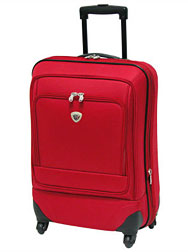Trunk with Grain and Straps
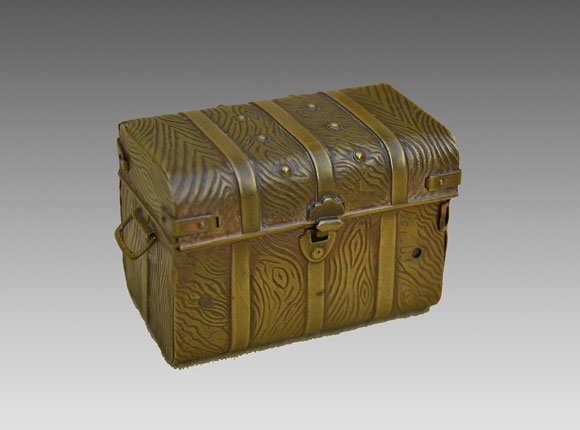
Needle Case (photographs from eBay)
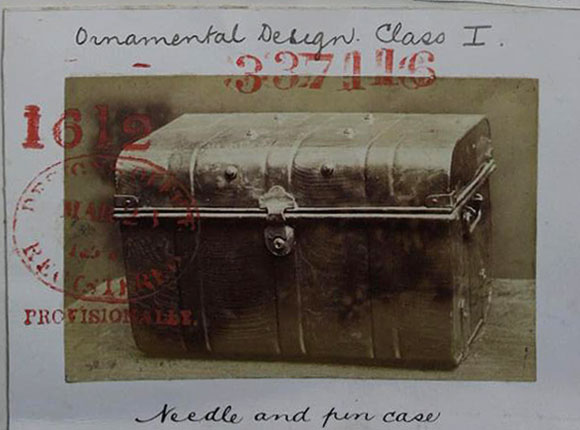
Design Representation
Design Details
Needle Case Type: |
Figural |
Patent/Registered to: |
Charles James Carr - Liverpool |
Patent/Design Representation #: |
Ornamental Class1: Metal: #337116 (Provisional Design #1612 registered March 28, 1879) |
Patent/Design Registration Date: |
July 12, 1879 |
Location of Patent/Design Registration: |
The National Archives (TNA) - Kew, UK |
Reference #: |
TNA Representation - BT 43/45/337116
TNA Register - BT 44/4/337116 |
Dimensions: |
5.7 x 3.5 x 4 |
Material: |
Brass |
Name Variations: |
a) Wm. Hall & Co. – Studley
b) W. Avery & Son - Redditch (the sole source of this information is Horowitz and Mann as no example of this needle case
with this company name has been seen by the authors of this website) |
Other Variations: |
None |
Additional Photographs
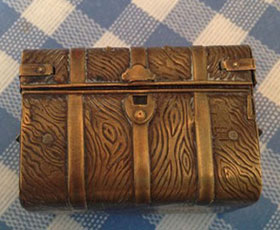
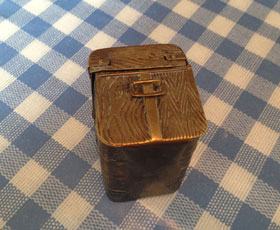
Front with clasp and side views
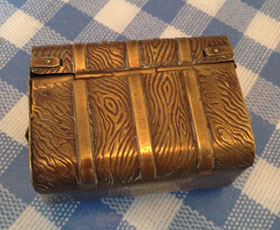
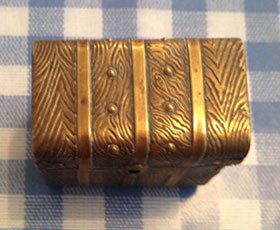
Back with hinge and top views
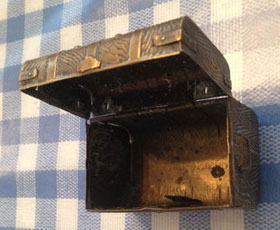
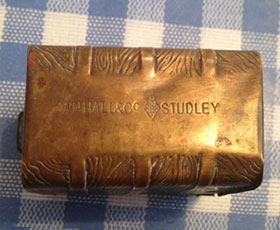
Interior and bottom detail
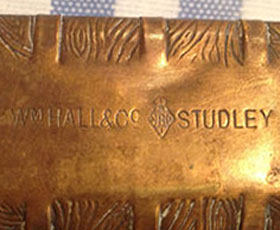
Bottom signature detail
Facts
A trunk is a large, sturdy box with a hinged lid used to store or transport clothing, personal effects and other possessions. They
are usually made of wood, leather, canvas or metal and often have reinforced metal corners for additional strength. A lock is located on the
front center with several drawbolts positioned between the lock and the trunk’s edge to secure the lid to the base. Leather straps with
buckles frequently surround the trunk, one on each side of the lock plate, providing extra security to prevent the lid from accidently
opening. Leather or metal handles for carrying are attached to the sides.
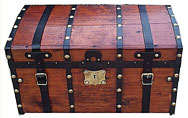
History
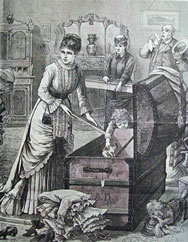
Although trunks have been around for centuries, most
of the ones seen today date from the late 18th century to the early 20th century. Large trunks were primarily used for travel away from home
for long periods of time. When “steamer” trunks first appeared in the late 1870’s their height could be no taller than 14 inches so they could
fit under the berths in trains or the bunks in steam ships. During these years many immigrants left Europe with a trunk containing all of their
possessions for a new life in the USA, Canada, Australia or New Zealand. Large trunks for travel were replaced by lighter suitcases in the 20th
century once travel by airplane reduced the time it took to travel from one distant place to another, requiring travelers to carry less clothing and
other personal items.
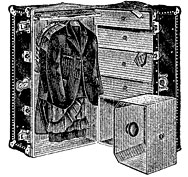
Miscellaneous
Suitcases are the most common luggage used today and they come in many different varieties, sizes and colors. Many have small built-in
wheels and telescopic handles so that can be pushed or pulled easily without the assistance of a porter or luggage handler. Others are
designed with shoulder straps so they can be taken on board airplane flights as carry-on-luggage protecting fragile items such as computers and
cameras. Some designs are made in such a way that the suitcase is expandable for travelers who purchase additional items during their
journey.
